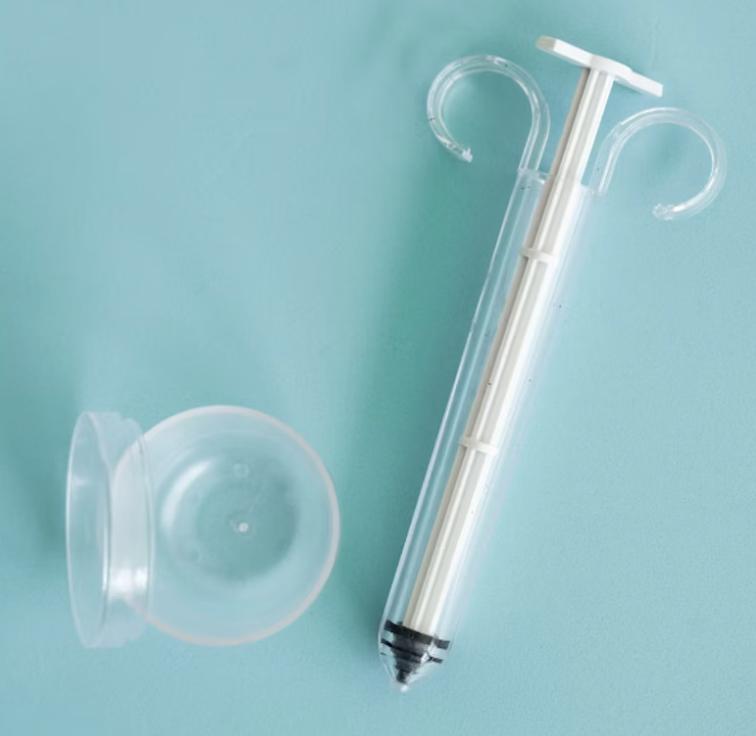Tulsi Gabbard, the former US Congresswoman for Hawaii’s second congressional district from 2013 to 2021, recently opened up about her unexplained infertility diagnosis last week. Infertility affects ten to 15% of the US population in the United States. In 30% of those cases, the cause is unexplained, which translates into around 12 million women in the US who struggle to conceive a child.
According to Dr. Jennifer Hintzsche, CEO of PherDal Fertility Science, unexplained infertility clinically correlates with dysbiosis of the reproductive microbiome. “Understanding this dynamic has been called the new frontier for reproductive science by world-renowned clinicians,” said Hintzsche.
Hintzsche created the PherDal kit—which is a play on the word ‘fertile’—to try and solve her own infertility challenges.
“The PherDal Kit offers people the opportunity to perform intracervical insemination (ICI) to place sperm just one inch lower than IUI with the longest and only sterile insemination syringe available,” she said. “This unique approach is as familiar to use as a tampon but allows for ICI to be safely performed in the privacy of the home.”
Scientific rigor
Two utility patents and the largest clinical cohort studies
“I made 200 kits in 2022 that sold out in 90 days, resulting in 34 beautiful children born into the world,” said Hintzsche. “In 2022, we partnered with the FDA and went on to be part of a new product category, which was introduced in 2023, which meant we now needed FDA clearance.”
Hintzsche says they decided to find a way to raise the money to pay for the FDA clearance testing and launched a crowdfunding campaign in 2022 that raised more than $630,000 from 433 people, including PherDal parents, to pay for the testing they needed.
“We spent most of 2023 ensuring we created the best at-home insemination kit that met the scientific rigor and safety standards people deserve,” said Hintzsche.
In December 2023, the Food and Drug Administration (FDA) cleared the first two at-home sterile in-home insemination kits for use by consumers over the counter without a prescription — Mosie Baby And PherDal Fertility Science.
PherDal Fertility Science received two utility patents for their insemination kit in December 2023 for its sterile technology, which combines the sterility of the clinic with the at-home capabilities, privacy, and comfort of home insemination.
“Our kit underwent the largest clinical cohort studies of any kit in addition to sterility, transit, sperm survival, performance and vaginal irritation testing to demonstrate our ability to help people safely conceive from our over-the-counter device,” said Hintzsche.
The role of the microbiome in reproductive medicine
Women with unexplained infertility have a different microbiome
“The natural bacterial environment in the vagina is known as the vaginal microbiome,” said Hintzsche. “While everyone has this environment, in some individuals, it may hinder the journey of semen to the uterus. This is an often-overlooked aspect of the fertility process and is actually the secret behind PherDal’s success rate.”
Hintzsche says the vaginal microbiome is a delicate ecosystem that can be disrupted by diet, partners and even objects. “This complex ecosystem influences the pH levels vital to sperm mobility and motility. When the pH is optimal, only about 1% of sperm successfully make the journey to the uterus during intercourse.”
Clinical studies have shown that women with unexplained infertility have a distinctively different microbiome when compared to their fertile peers.
PherDal’s insemination kit bypasses and protects the microbiome to deliver sperm directly to the cervix. “Instead of one percent that would naturally reach the cervix, the halfway point to the egg, PherDal delivers over 90% of the sample directly to the cervical opening, increasing the probability of conception,” said Hintzsche.
“The PherDal Kit offers people the opportunity to perform intracervical insemination (ICI) to place sperm just one inch lower than IUI with the longest and only sterile insemination syringe available,” she said. “This unique approach is as familiar to use as a tampon but allows for ICI to be safely performed in the privacy of the home.”
Traditionally, the first line of treatment for people struggling to conceive has been sterile intrauterine insemination (IUI).
“But, IUI can only be performed in the clinic using sterile devices that bypass the reproductive microbiome, placing washed sperm directly into the uterus,” said Hintzsche. “It is invasive and often not covered by insurance, and thus comes with a heavy financial burden — which makes IUI inaccessible to many individuals seeking fertility assistance.”
Bypassing the microbiome
“The PherDal Kit offers people the opportunity to perform intracervical insemination (ICI) to place sperm just one inch lower than IUI with the longest and only sterile insemination syringe available,” she said. “This unique approach is as familiar to use as a tampon but allows for ICI to be safely performed in the privacy of the home.”
PherDal’s insemination kit bypasses and protects the microbiome to deliver sperm directly to the cervix. “Instead of one percent that would naturally reach the cervix, the halfway point to the egg, PherDal delivers over 90% of the sample directly to the cervical opening, increasing the probability of conception,” said Hintzsche.
Women’s health and well-being
“Looking back on the last 125 years of medicine, it wasn’t until recently that women became doctors. It wasn’t until 2017 that women and minorities had to be included in phase III clinical trials,” said Hintzsche. “That means that for most of our recent history, reproductive medicine has been male doctors looking at sperm with other male doctors.”
“I think unexplained infertility was probably the best doctors could do for a diagnosis in 1924; today, it’s an insult,” she said.
“We have the ability to perform personalized cancer medicine; I think we can do a little better than just saying—we don’t know what’s wrong; unexplained infertility sounds like a good enough diagnosis,” said Hintzsche.
Read the full article here






